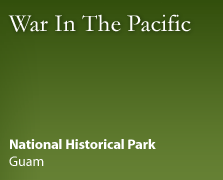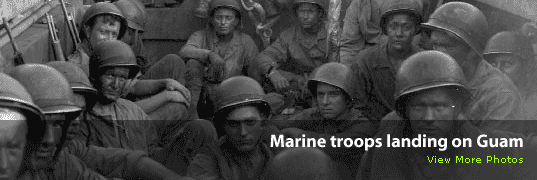|
|
Did You Know?
|
|
| |

| |

Marines crouch on beach as Japanese land mines knock out a couple of their tanks. Visiting the same site today is an amazing contrast to how these beaches looked during war time. National Park Service photo. |
| |

- The three Japanese coastal defense guns located at the Piti unit were never fired?
- That more than 50 years ago, by forced labor, the Chamorros built
many of the Japanese fortification and defense structures that can be seen throughout the park and island.
- Within the seven park units there are coral reefs, limestone forests, wetlands, a mahogany forest, and tropical savannah ecosystems?
- War in the Pacific has one of the highest levels of species diversification within the park service and has one of the most diverse coral reefs?
- During the Japanese occupation the area now known as Asan Beach Unit was a rice paddy?
|
|
|
|





